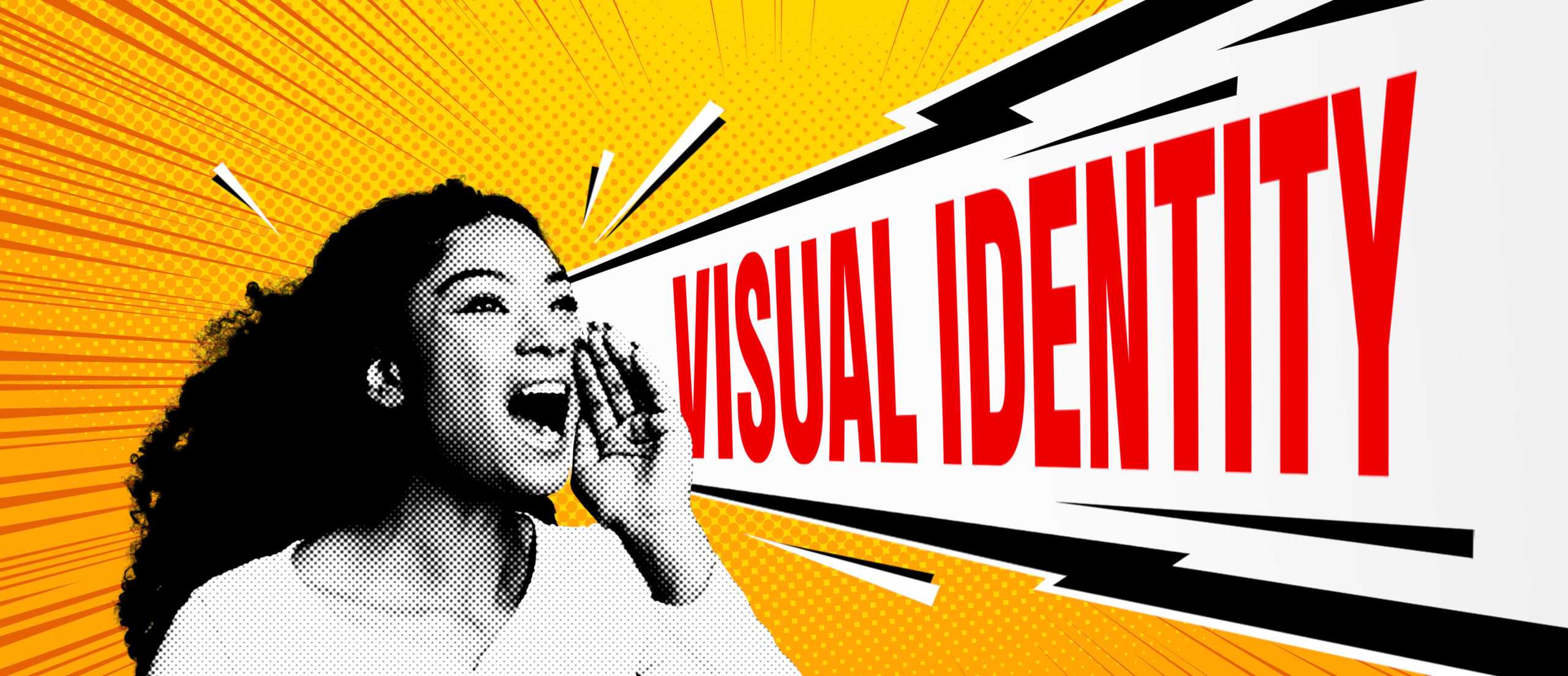Have you ever thought about what a logo sounds like?
Artist and designer Aaron Sechrist once described the original logo of the Florida Panthers hockey team as “looking how Van Halen sounds.” How does a logo sound like anything? And is it the logo design itself making you hear or feel anything, or is it something else?

The logo that Sechrist was referring to features an illustrated panther leaping out towards the viewer, claws extended, in a retro, jagged-line illustration style. Sporting a vibrant color combination of deep blue, bright red, and mustard gold, the logo fits right in with the lively style of the early 90s,when the team first debuted.
Put another way, if the logo was stitched into an embroidered patch and sewn on a denim jacket, the Panthers logo might look like a fashion accessory fit for a rockstar.
The phenomenon that Sechrist described is something called visual identity graphic design, and it is often marked by an emotional reaction to experiencing the visual elements of a brand. This can include sensory reactions, such as the feeling that a visual element is triggering an auditory effect simply by looking at a logo.
What is Visual Identity Graphic Design?
Visual identity is the personality of a brand represented through visual experiences that include logo, color palette, typography, imagery, advertising layouts, icons, the interior design of a store, and more.
We have all encountered visual identity graphic design in many forms, especially in advertising. Brands use specific colors to trigger psychological responses. Red can express intensity, energy, or a warning, blue is calming and trustworthy, and green symbolizes luck, hope, and contentment.
The look and style of a logo also play a role in visual identity design. However, it is often only one piece of the experience and relies on other visuals to complete the identity, with color being a key factor.
Visual identity is not brand identity, which often includes non-visual elements like tone of voice, messaging, mission and vision statements, audio assets, etc.

Visual identity is the first impression and resulting emotions you experience at that first glance. A good visual identity system will force an emotional reaction to a brand, which is often intended to be positive or something to keep the brand on your mind.
We see this most often in food advertising, where a visual combination of imagery, color, and typography is carefully designed to make you want to experience the food (and sometimes also the social environment) featured in the ad. The specific elements of the visual identity make you feel hungry and evoke an immediate response to want to eat the food items shown in the ad.

This emotional reaction is not just the result of one brand element, but the combination of a visual identity graphic design system that merges several visuals to achieve this result.
Prioritizing imagery selections to evoke these preferred emotional responses is key in advertising and marketing. For example, many soft drink makers have abandoned their previous efforts to battle each other on taste, and instead focus on the consumer experiences. If not for logo and product placement at the end of a summer soda commercial, the ad could just as easily be for beach gear, barbecues, pool parties, or concerts, while making little-to-no mention of the product itself. The emotional response is prioritized over qualities like taste, price, or nutritional information.
So how can visual identity graphic design work for you? Here are some tips for leaning on visual experiences to tell a memorable brand story and inspire emotional reactions from your audience and customers:
Type it out
One of the easiest ways to set a tone visually is through type styles and font choices. Certain font styles can immediately inspire a feeling about your brand. If your current brand’s typography isn’t saying much about your company or your products, consider testing out a new font to see if your audience gets a stronger feeling from not just what your headline says but from how it looks, too.
Different type styles applied to the same lettering, headline, or logo can completely change a customer’s impression of a brand. Typography can shift perceptions from high-end culinary experiences to trendy bistros or quick-serve discount markets by a simple change in font, as seen below.

Tell a color story
Certain colors can trigger specific feelings or emotions. Ensure that the colors you selected for your brand align with your visual identity goals. Promoting a yoga apparel business using a black, red, and white color palette might not make sense for a brand associated with health, fitness, and mindfulness.

Brands that excel in visual identity graphic design use color palettes that draw customers in. Crayola could have chosen any pair of colors for its visual identity, but with a focus on serving schools, its green and yellow palette has been associated with growth and youth, since 1903. Over the years, those colors became increasingly connected to education – dark green is a common color for classroom chalkboards and yellow is synonymous with school buses.
Package the experience
Visual identity graphic design is key to shaping all-important first impressions. These systems include environmental graphics, signage, the interior design of a store, product packaging, and supporting materials like instruction documentation. These physical elements of the brand are crucial to shaping the visual identity experience, especially in retail locations where customers are making decisions about a brand as soon as they walk through the door.

One of the most effective visual identity system examples is Ikea. The Swedish home decor brand is synonymous with happiness, simplicity, and modern aesthetics – key brand attributes reinforced by their visual design system. The brand colors combine calm and happy hues (blue and yellow). Their vast showrooms and full-room displays allow customers to completely immerse in Ikea products, envisioning their own happy homes made possible by affordable and accessible products. Even their instruction manuals are designed to seem as simple as possible, using minimal text and relying more on basic illustrations to show each process step.
Volume up, volume down
Visual identity graphic design strategies don’t always need to achieve an emotional response across all channels. You need to know when to turn up the volume and get loud and when to dial it back. If you are in the restaurant business, your advertising should entice your customers to visit your establishment for a delicious burger or sandwich with images of tasty food options. Your packaging and signage, however, do not need to do the same. Get “loud” with your advertising using photos of mouth-watering meals, but then use subtle visuals on your take-out bags and menus – items intended to reinforce your visual brand message.
Different parts of the visual identity graphic design system should operate at different levels to maintain consistency but not be repetitive or overwhelming.

Conclusion
Visual identity can be a highly effective tool for connecting with customers emotionally. Creating visual experiences that inspire a feeling, as opposed to being told what to think about a brand produces long-lasting positive impressions. It associates the brand with memorable feelings and experiences. Visual design that aims to replicate a sound, a taste, or a sense of fun, excitement, or positive energy can build brand associations that extend your messaging beyond the headline. Not everyone will have the same reaction to visual identity graphic design systems, so aim for emotional responses that resonate with the widest audience. As long as people walk away feeling something from their interaction with your visuals, your design system can succeed in turning new customers into regulars.

